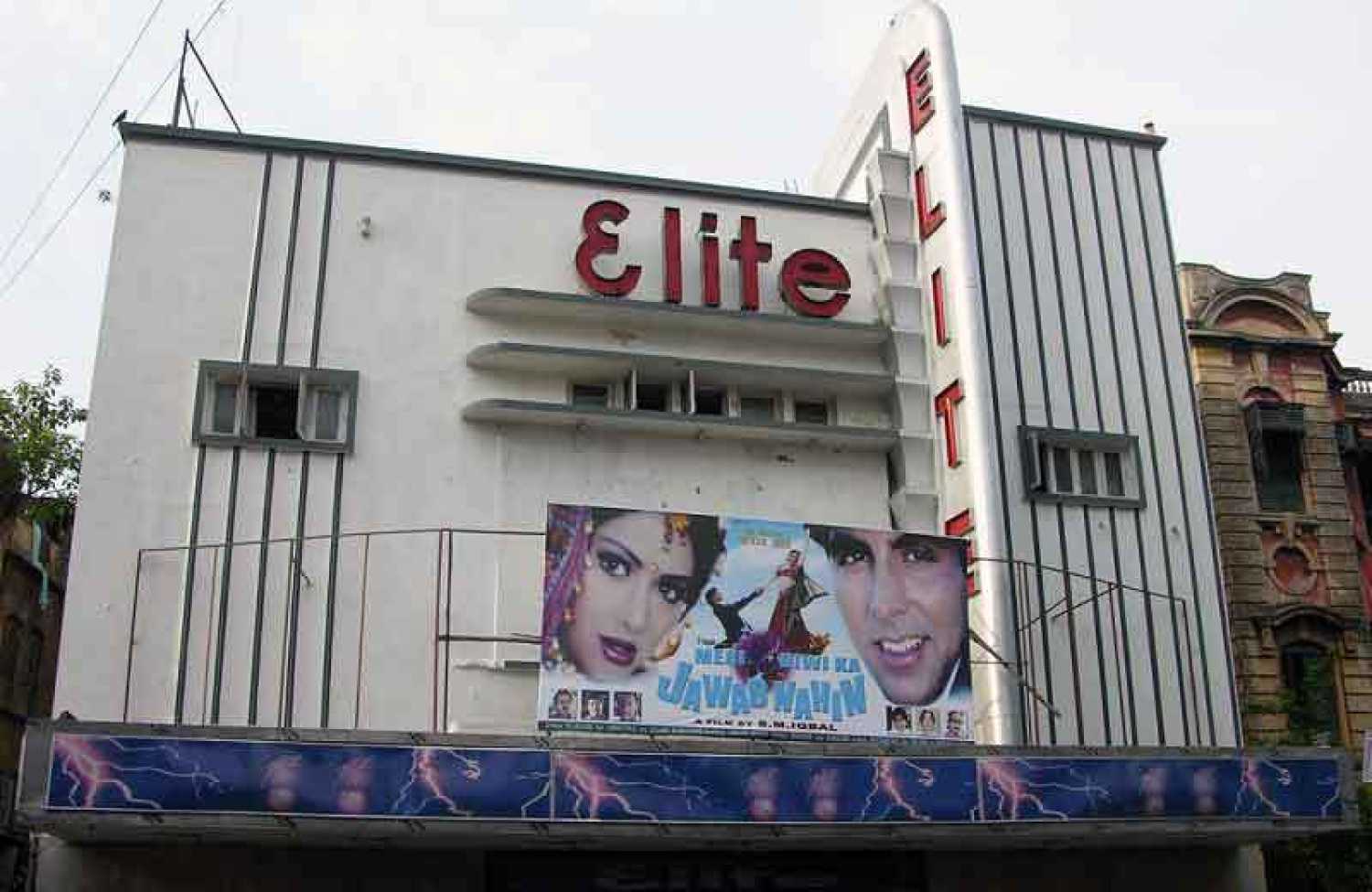With the 1,228- seater running on only 1-2% occupany in its last days, the owners of the theatre have not been able to clear the salaries of its employees.
Kolkata's landmark Elite cinema shuts after illustrious 103-year journey
Kolkata - 09 Jun 2018 4:00 IST
Updated : 15:35 IST


Roushni Sarkar
The shutting down of Kolkata’s heritage single-screen theatre Elite has left cinema artistes of previous generations brooding.
Unable to keep the business going with competition from the newfangled multiplexes and the internet, Elite was closed on 1 June 2018.
Once owned by the Hollywood studio 20th Century Fox, the iconic theatre had 1,228 seats. However, for the past one year, the occupancy had been just 1-2%, making it difficult for the current owners to sustain the business.
John Abraham’s Parmanu: The Story Of Pokhran was the last film to be screened at Elite. With the film managing to earn just Rs30,000 at the theatre, the owners have not been able to clear even the salaries of its employees.
In an interview with the Business Standard newspaper, Elite's manager Shambhukumar Batabyal said, “The bars of Elite cinema were closed two months back. Even if we could manage to run the bars, we would have been able to pay the employees. Now our sole responsibility is to clear their dues.”
The Palace of Variety was established in 1915 in the New Market of Calcutta. In 1938, it was renamed Elite cinema when it was taken over by 20th Century Fox and the famous photographic studio Bourne & Shepherd. Projectors were imported from the United States to screen silent films and a piano was set to accompany the screenings.
There was a time when only international blockbusters were screened at Elite, including titles like Gone With The Wind (1939), The Guns Of Navarone (1961), My Fair Lady (1964), The Sound Of Music (1965) and Godfather (1972).
Actor Chiranjeet Chakraborty, in an interview with The Times of India newspaper, said, “When I was growing up, single screens had a charm of their own. I remember watching The Sound Of Music at Elite. And there were lots of other movies. Since there were many eateries all around, my friends and I would first eat and then go for a film and again come out and eat. The New Market area itself would leave me starry-eyed.
"I watched Samson And Delilah (1949) in Lighthouse cinema with my father. Then there was Ulysses (1967). There would be large cutouts of the film in front of the theatre and I could see them from the bus stop. Later, Manikda [filmmaker Satyajit Ray] would tell us which films to watch and they used to mostly run in Esplanade theatres."
Sanjay Mukhopadhyay, former professor at the film studies department of Jadavpur University, recalled the golden era of the theatre in an article in Anandabazar Patrika, a Bengali daily. “During the 1970s, I have seen Satyajit Ray standing in front of the hall. I have also seen him scrutinizing the cinematic details of Grigori Kozintsev’s Hamlet (1964) as a fascinated student. I went to watch Fernando Solanas’s The Hour Of The Furnaces (1968, documentary) with the legendary Mrinal Sen in Elite,” he wrote.
Elite, New Empire, Lighthouse and Metro opened new doors for cinema enthusiasts of the era. Even Tiger, the hall which was considered to have less ‘class’, screened films such as Claude Lelouch’s Hommes, Femmes, Mode d’Emploi (1996). This was the rich culture that thrived around those theatres. Also, there were clean bars attached and smoking was unofficially allowed.
“We couldn’t stop taking puffs while watching Luchino Visconti’s Death In Venice (1971)," wrote Mukhopadhyay. "I also remember Sunil Gangopadhyay sipping whiskey during the intervals.”
“I watched Hamlet (1996) several times in Elite and was so amazed by Fernando Solanas’s The Hour Of The Furnaces that I caught three back-to-back shows," recalled filmmaker Goutam Ghose in an interview with The Times of India. "Back then, a lot of foreign films would be shown there, which later became a theatre for Hindi releases. Years back, the Metro cinema in Mumbai, which is a heritage building, was turned into a four-screen theatre while retaining the façade. I hope and pray Kolkata sits up and takes notice.”
Elite was famed for frequent houseful shows. The theatre witnessed the craze surrounding the on-screen pair of Uttam Kumar and Suchitra Sen through their films and also catered to arthouse movies.
The likes of Soumitra Chatterjee, Aparna Sen, Mohit Chattopadhyay, Raj Kapoor, Amitabh Bachchan and Shah Rukh Khan have been on the guest list at Elite. When Bachchan’s Shahenshah was released in 1988, the eager audience formed unbelievably long queues to get into the theatre.
Most single-screen theatres have shut down, taken over by markets and multi-storeyed buildings. At the same time, it has become difficult for the middle-class audience to watch films as the prices of tickets have soared in multiplexes. Further, most films are released first in mutiplexes in Kolkata and reach the single screens only in the fourth or fifth week.
Veteran actress Sabitri Chatterjee lamented the shutting of Elite, saying, “I was very sad. I have been there countless times to watch films in peace. Be it Metro, Lighthouse or Elite, many single screens in Esplanade would run the best of English films. And now, they are not there anymore... It’s like losing the city’s heritage, as some of the best theatres don’t exist anymore. As an actress, I was born on stage, and it’s heart-breaking to see them turn into marriage halls. It’s the same with movie theatres.”
Mukhopadhyay pointed out that films nowadays are made largely to entertain and believes watching films in multiplexes is almost like "window shopping".
Related topics
Iconic theatres



